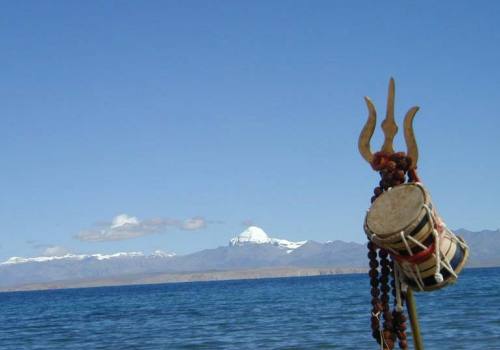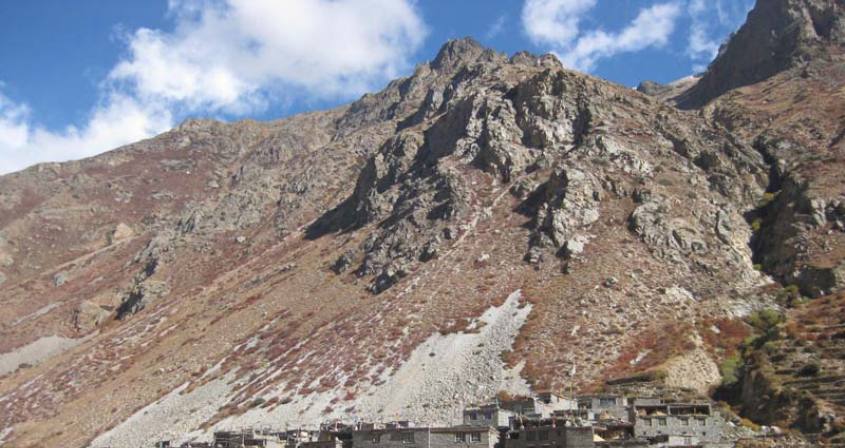Humla and Limi Valley Trek
About Trip -
Humla and Limi valley trek route lies hidden in the far northwest corner of Nepal. It receives heavy snowfall and remains isolated and snowbound throughout the winter, Lower parts of Humla are mostly habitat by theKhasa tribe.
Lying on the far North West of Nepal, Limi is one of the isolated valley extending from the border of the Himalayan pass near Hilsa to another pass Chang-la between Nepal and Tibet. The longest River of Nepal, Humla Karnali flows into Nepal border at Hilsa where the valley starts from west side. This ancient Trans Himalayan Limi Valley is beautiful and scenic. The top of Gyuckarka at 5,000m offers wonderful panoramic scenery of Nepalese Himalayas from Saipal 7,031m, Byas, Rishi, Api, Kanjirawa, Kanti and Gorakh Himlayan range. This region is also famous for rare flora and fauna, like the marmot, wolf, wild yak, blue sheep, wild ass (Kyang) musk deer, hare, Himalayan black beer and occasionally the snow leopard in this exotic region.
Indigenous Tibetan cultured people are settled here and they have their own Tibetan dialogue and language with their unique tradition and culture, large beautiful villages like
Haljee and Gombyak are located in the wild patches of Limi Khola. This valley is recently opened for trekkers since 2002 AD and the first group of foreigners was Mike A Murphy geo-science group from the University of Houston USA this group explored this area for about one and half months. To protect this fragile eco-system of this hidden valley, the government of Nepal issues the limited number of permits with special fees.
HUMLA-Nepal’s Wild West.
Humla was once part of the great Malla empire administrated from Sinja near Jumla.Until 1787 this empire extended as far as to Purang (Taklakot) and the ‘Lost’great villages of Toling(Zanda) and Tsaparang located in a remote south western Tibet, and to the north of Nanda Devi and Kamet Himal.Taklakot is an extraordinary melting pot with traders and merchants from the nearby countries, Indian, Chinese, Tibetan and Muslim traders from Kashgar, Nepalese entrepreneurs trading wool, salt and Indian goods along with Chinese Government officals and a huge army contingent.
In Humla the traditional salt/grain trade with Tibet continues as it has for centuries.This trade has ceased in most of Nepal, because of the import of Indian salt and the other reason is that China has eliminated many border trading posts in remote regions.
Restricted Area trekking…when the earth kisses the sky…
If you are wishing to get well off the beaten track you may wish to consider a journey to some of the fascinating restricted regions of Nepal.
These regions remain pristine wilderness & ecological cultural museums where life has changed very little. An intimate experience of the differing ways people arrange their lives in order to cope with their often harsh physical conditions on some of the toughest terrain on earth. A journey full of questions and contrast awaits everyone who visits this side of Nepal.
Some of the remote areas of Nepal were restricted for foreign visitors until 1991. After multiparty democracy in Nepal, rules have been changed together with new democratic constitution regulations and opened for visiting the most inaccessible and firmly controlled areas in Nepal. The regulation is designed primarily to protect the environment and cultural aspects of the remote regions and provide security and safety for both foreign trekkers and Nepal's northern borders with China.
The treks must be fully arranged through a registered Trekking Company. It has to be fully equipped with tents, all Support staffs, cooks, etc. The trekking agency arranges the trekking permit through a series of applications and guarantee letters. You cannot trek alone in these restricted areas. You should be at least 2 people in the group.
Encounters Nepal has a decade of experience in operating in restricted zones & we will arrange all your trek formalities & logistics for some of the most challenging & thrilling adventures in the great outback of Nepal.
Outline Itinerary -
Day 01:Arrival in Kathmandu./Kathmandu tour will depend on your time./overnight at hotel in Kathmandu.
Day 02:AM: Proceed for sightseeing tour to Kathmandu city visiting, the ancient palace square also known as the Durbar Square where you will witness the ancient palaces and the temples, Kasthmandap temple made out of a single tree during ancient age, temple of the living goddesses the Kumari, etc. Later, proceed towards Swoyambhunath stupa, one of the Buddhist shrine and also known as the monkey temple situated on the hillock towards the west of Kathmandu and overlooking the Kathmandu valley. Unlike other stupas, this stupa has got a spiral shape which has typical significance. PM: Proceed on to another city of the valley called Patan city which is also known as the city of fine arts where one can witness splendid artifacts of the medieval period. Afterwards, drive back to the Hotel and rest of the evening will be at leisure Overnight at the hotel in Kathmandu on bed & breakfast basis.
Day 03:AM: Proceed on sightseeing tour to Pashupatinath temple, the holiest shrine of the Hindu people where the non Hindu people are not allowed to get inside the temple and they are allowed to witness the temple from the view point, situated on the opposite side of the main temple. Later, proceed to Boudhnath stupa, the Buddhist pilgrimage and biggest of it’s kind in Asia. PM: Proceed on sightseeing tour to Bhaktapur city, also known BHADGAON and the city of devotees. It is the third major city of Kathmandu valley and in many ways the most medieval city. Overnight at the hotel in Kathmandu on bed & breakfast basis.
Day 04:Fly to Nepalgunj and transfer to Hotel.
Day 05:Fly to Simikot 2,950 m
Day 06:Trek to Dharapuri 2,300 m
Day 07:Trek to Kermi 2,670m
Day 08:Trek to Yalbang 3,020m
Day 09:Trek to Tumkot 3,380 m
Day 10:Trek to Yari 3,700m
Day 11:Trek to Hilsa 3,720 m
Day 12:Trek to Manepeme 3,990 m
Day 13:Trek to Til 4000 m
Day 14:Trek to Halji 3,660 m
Day 15:Trek to Jang 3,930 m
Day 16:Trek to Talung 4,370 m
Day 17:Trek to Shinjungma 3,620 m) via Nyalu La 4,949 m
Day 18:Trek to Kermi 2,670 m
Day 19:Trek to Simikot 2,950 m
Day 20:Fly to Nepalgunj-Kathmandu.
Customize TripImportant Note
The 17 Days Humla and Limi Valley Trekking Itinerary we propose to you is only on outline. It is entirely based on your interest & as per your wishes; however, when you are in the field our itinerary is implemented practically by our guides who are very comfortable, flexible and understanding if any minor changes are required by you; but this is only done after consulting the tour leader & the group. Our itinerary is purely based on making your trip enjoyable with full of pleasure to give you maximum benefits in the course of your holidays. Encounters Nepal has a decade of experience in operating in restricted zones & we will arrange all your trek formalities & logistics for some of the most challenging & thrilling adventures in the great outback of Nepal.
Detail Itinerary
Day 1Arrival in Kathmandu./Kathmandu tour will depend on your time./overnight at hotel in Kathmandu.
Day 2AM: Proceed for sightseeing tour to Kathmandu city visiting, the ancient palace square also known as the Durbar Square where you will witness the ancient palaces and the temples, Kasthmandap temple made out of a single tree during ancient age, temple of the living goddesses the Kumari, etc. Later, proceed towards Swoyambhunath stupa, one of the Buddhist shrine and also known as the monkey temple situated on the hillock towards the west of Kathmandu and overlooking the Kathmandu valley. Unlike other stupas, this stupa has got a spiral shape which has typical significance. PM: Proceed on to another city of the valley called Patan city which is also known as the city of fine arts where one can witness splendid artifacts of the medieval period. Afterwards, drive back to the Hotel and rest of the evening will be at leisure Overnight at the hotel in Kathmandu on bed & breakfast basis.
Day 3AM: Proceed on sightseeing tour to Pashupatinath temple, the holiest shrine of the Hindu people where the non Hindu people are not allowed to get inside the temple and they are allowed to witness the temple from the view point, situated on the opposite side of the main temple. Later, proceed to Boudhnath stupa, the Buddhist pilgrimage and biggest of it’s kind in Asia. PM: Proceed on sightseeing tour to Bhaktapur city, also known BHADGAON and the city of devotees. It is the third major city of Kathmandu valley and in many ways the most medieval city. Overnight at the hotel in Kathmandu on bed & breakfast basis.
Day 4Fly to Nepalgunj and transfer to Hotel.
Day 5Fly to Simikot 2,950 m
Day 6Trek to Dharapuri 2,300 m
Day 7Trek to Kermi 2,670m
Day 8Trek to Yalbang 3,020m
Day 9Trek to Tumkot 3,380 m
Day 10Trek to Yari 3,700m
Day 11Trek to Hilsa 3,720 m
Day 12Trek to Manepeme 3,990 m
Day 13Trek to Til 4000 m
Day 14Trek to Halji 3,660 m
Day 15Trek to Jang 3,930 m
Day 16Trek to Talung 4,370 m
Day 17Trek to Shinjungma 3,620 m) via Nyalu La 4,949 m
Day 18Trek to Kermi 2,670 m
Day 19Trek to Simikot 2,950 m
Day 20Fly to Nepalgunj-Kathmandu.
Trip Map
Fixed Departure

Kailash Mansarovat tour with Pink Mountain Treks and Expedition let you to feel most memorable adventure trip of the life.…
In Detail